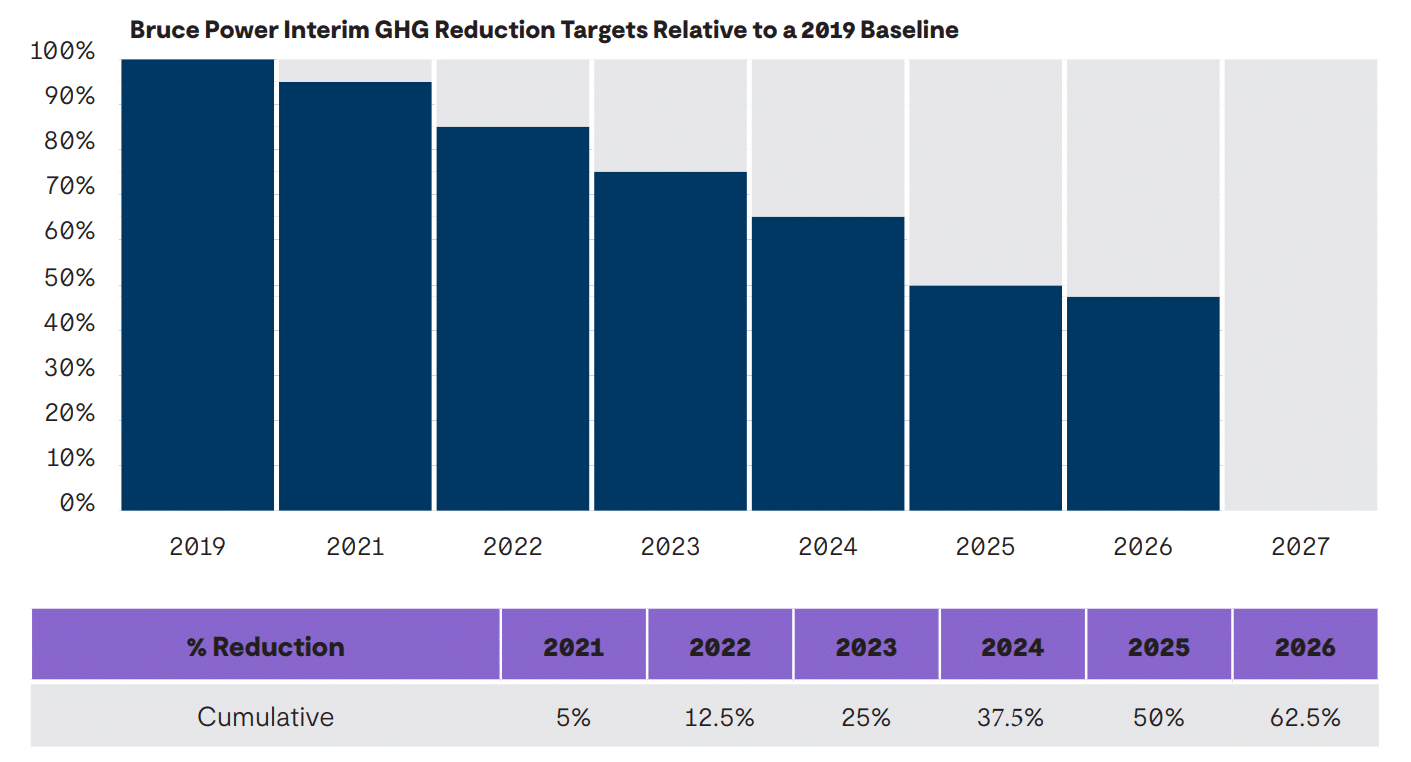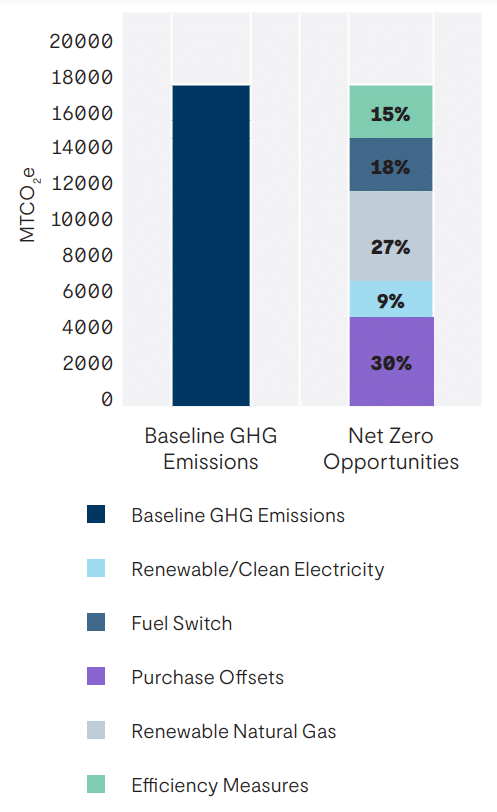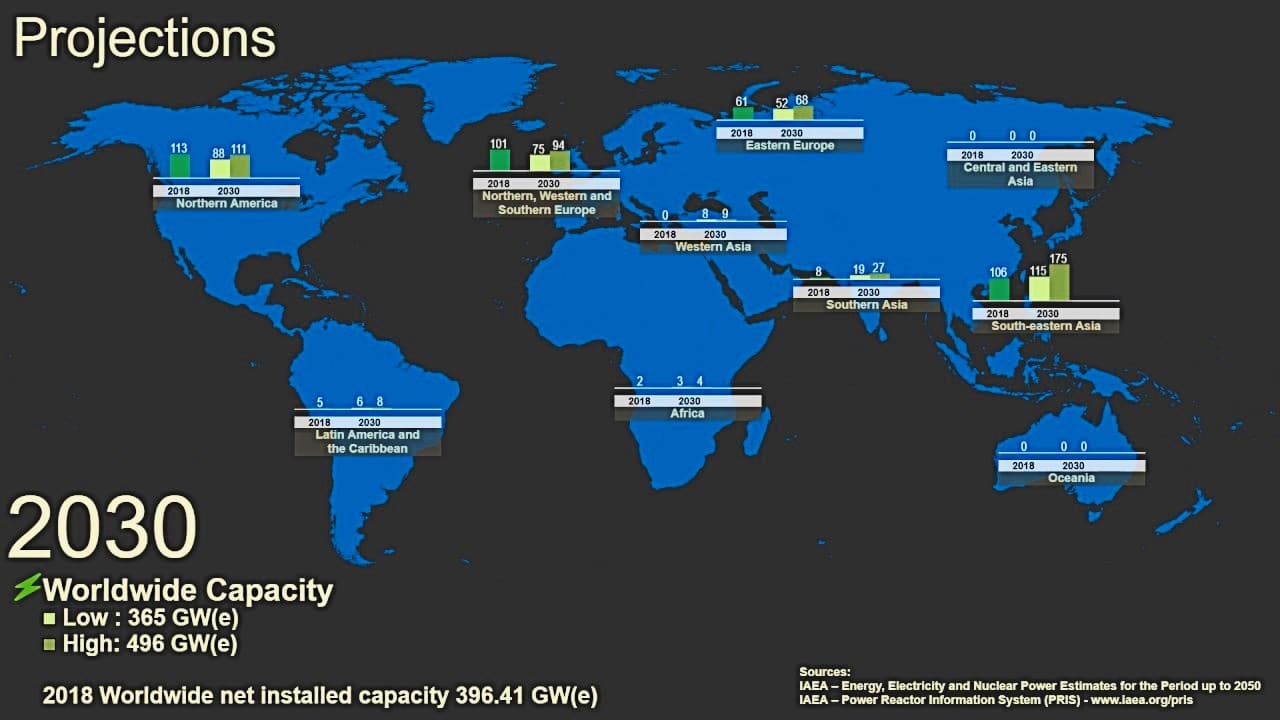Bruce Power has introduced the inaugural carbon offset protocol for nuclear generation, marking a pioneering move in the industry.
The announcement was made by the Ontario-based power company at the United Nations climate conference, COP28, happening in Dubai.
Bruce Power delivers clean, reliable nuclear power to families and businesses across the Canadian province. It aims to be the first nuclear plant in North America to reach net zero greenhouse gas emissions by 2027.
The company’s Executive Director of Corporate Affairs, Pat Dalzell, highlighted the significance of this milestone in positioning the nuclear industry as a leader in clean energy, saying:
“This groundbreaking carbon offset protocol is yet another step in the right direction for the nuclear industry as a clean energy leader. Bruce Power is taking this next step to help battle climate change and achieve net zero goals…
Pioneering Nuclear Carbon Offset Protocol
Bruce Power has partnered with GHD, a global energy company, to develop the carbon offset protocol for nuclear generation.
This initiative follows the firm’s recent sale of Clean Energy Credits and aligns with their ambitious 2027 net zero target. The ultimate goal is to contribute to climate change efforts while fostering economic benefits for Canadian firms.
To achieve its net zero by 2027 goal, Bruce Power has the following interim net reduction targets using 2019 baseline:
Each day Bruce Power produces 30% of Ontario’s electricity and avoids about 19 million tonnes of greenhouse gasses a year. By helping Ontario phase out coal, it’s like taking 7 million cars off the road.
The power company noted that it can avoid 15% of GHG emissions, reduce 18% through the use of lower carbon fuels, and substitute 36% of emissions for renewable/clean energy. 30% of its net zero efforts will involve purchasing carbon offsets.
Bruce Power Net Zero Strategy
Carbon offsets represent a certain amount of reduced or removed carbon dioxide or its equivalent. While these offsets have been used by companies in their decarbonization strategies, this is the first that they’ll be used for nuclear power generation.
Ontario’s Minister of Energy, Todd Smith, emphasized Bruce Power’s pivotal role in transitioning the province away from coal-fired generation.
The company’s experience in clean energy, financial collaborations for its Green Bond program, and active engagement in Ontario’s Clean Energy Credit program reinforce the importance of credible, additional, and tangible clean energy credits and carbon offsets.
- Nuclear power offers a clean energy alternative to fossil fuel while providing broader impacts to the grid’s stability.
Bruce Power’s new carbon offset protocol, presently undergoing third-party validation, aims to leverage clean nuclear energy to meet growing demands. It will also enable consumers and businesses to continue their decarbonization journey through electrification.
Amplifying Nuclear Power’s Clean Energy Impact
Bruce Power plans to increase its electricity production without adding more greenhouse gasses. They will do this by enhancing their systems, making them more efficient, and upgrading nuclear units equipment through Project 2030.
The initiative seeks to optimize the output of their current assets, aiming to boost electricity generation from 6,550 MW to 7,000 MW by the 2030s. Project 2030’s main targets include:
This increase in nuclear power output at the Bruce Power site will lead to less use of emissions-heavy electricity produced from natural gas in the region. The main objectives of Project 2030 are to:
- Lower the GHG emissions produced by Ontario’s grid by substituting some electricity generated by natural gas power plants.
- Enhance the stability of Ontario’s electricity grid by diversifying the sources of electricity production.
- Support Ontario’s objectives as per the Independent Electricity System Operator (IESO) guidelines.
Nuclear Demand Surge and Investment Opportunities
Bruce Power’s groundbreaking news has never been more timely. Nuclear gained victory at COP28 climate talks where countries pledged big time commitment to this energy source.
In fact, the world’s nuclear energy capacity will triple by 2050, a massive deal to reduce emissions and decarbonize economies. This global agreement, called the Net Zero Nuclear Industry Pledge, reflects the surging global demand for nuclear energy.
Another innovative Canadian company, Uranium Royalty Corp. (NASDAQ: UROY, TSX: URC), showed support for the pledge, endorsed by 120 industry members at COP28. These include the US, UK, France, UAE, Japan, South Korea, and Canada.
URC’s CEO, Scott Melbye, expressed enthusiasm for nuclear energy’s role in curbing climate change, emphasizing URC’s readiness to support uranium demands as part of this clean energy push.
The International Atomic Energy Agency (IAEA) projected that worldwide nuclear installed capacity by 2030 will stand at 496 GW. In North America, that would be at 111 GW at the maximum, making it the second largest nuclear producing region.
- READ MORE: The Great Nuclear Race
Bruce Power’s introduction of the carbon offset protocol for nuclear generation marks a significant milestone in clean energy initiatives. Moreover, URC’s endorsement of nuclear power’s net zero pledge cements the industry’s leadership in the clean energy transition. These developments suggest a growing interest in nuclear power across different sectors, unlocking investment opportunities for sustainable energy.





